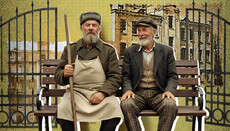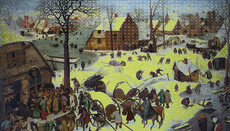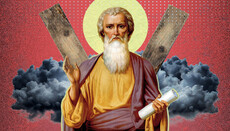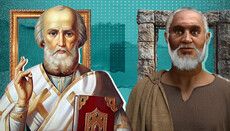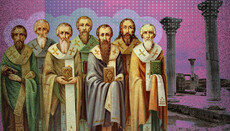The difference between the Eucharistic and clerical Church models
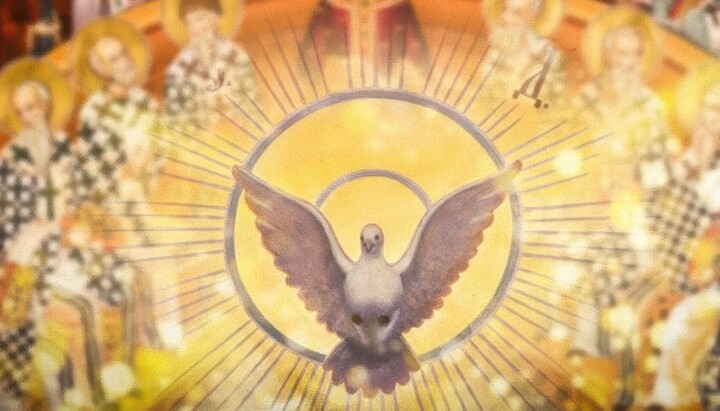
The Church is not an institution that should satisfy the "metaphysical needs of the people". It is a Eucharistic assembly where mortal human life is transformed into incorruptible life.
The Feast of the Holy Trinity and the Day of the Holy Spirit are celebrated as the birth of the Church, the essence and meaning of which, unfortunately, is forgotten even by those who act as "guarantors of faith". Therefore, today I would like to remind you of the original meaning of this concept.
As is known, the word "church" comes from the Greek "ekklesia," which means "assembly of the chosen". The first Christians responded to the call of Christ addressed to them and united in the Church. It is important to note that what united them was neither a religion built on some new principles, nor an ideology or a doctrine. The first Christian communities were people gathered around the Eucharist. People with whom God made a new covenant, sealed by the sacrificial Blood of the Lamb of God. Being part of this people and a member of the body of the Church means accepting the New Testament by participating in the breaking of bread and the blessing of the cup, that is, in the Eucharistic meal.
The Church is not a hierarchical administrative structure located in buildings and offices; it is primarily the manifestation of the Kingdom of God on earth in its Sacraments.
The Church is not a new teaching but a gift of the possibility of renewing life, which we receive in the Flesh and Blood of Christ, in the true unity of the created and the uncreated.
Pentecost is not an event of the past. It is a continuous process of renewal that, once begun, will never end. The renewal of life is not a moral improvement of a person, not a legal rehabilitation; it is the life-giving descent of the Holy Spirit on our human nature.
Unfortunately, people often identify the Church with the clergy, i.e., with priests, separating those who perform the Sacraments from the rest of the believers. Why did this happen?
Let's recall history. The apostles, founding the first communities, chose one of the converts, the most experienced one, and through the laying on of hands, passed on to him the gift of seniority. His role was to lead the eucharistic assembly, that is, to preside at the Table, to perform baptisms, and to guide the spiritual life of the community. These leaders were called bishops (overseers) or presbyters (elders). These two terms were initially used as synonyms. Later, the head of the community was designated as a bishop, and a council of presbyters formed around him. This shift was due to the rapid growth of the community, which made it difficult for a single bishop to carry out all his responsibilities alone. Therefore, through the laying on of hands, he delegated to presbyters the authority to celebrate the Eucharist on his behalf in the parishes that were part of the larger community.
The life of the ancient Church was built on a family type. The head of the community was a father to the Christians, and the members of the community were brothers and sisters to each other.
With the passing of the apostolic generation, it was decided that a new bishop must be ordained by no fewer than three other bishops. This ordination (or chirotony) was performed during the Divine Liturgy. At that point, a question arose: who should preside over such a eucharistic assembly? It was decided that this role should belong to the bishop of the largest city in the region, known as the metropolis (literally, “mother city”). From this came the additional title for the bishop of the metropolis – metropolitan.
The metropolitan was already entrusted with some special functions. In addition to presiding at the local council, he acted as an arbitrator in resolving disputes and conflicts between bishops and presbyters. The metropolitan himself, together with the local bishops, was a kind of analogue of the modern Holy Synod. The institution of metropolises developed after the end of persecutions and the recognition of Christianity as the official religion of the Roman Empire. By the end of the 5th century, the bishops of the four largest administrative and cultural centers of the empire (Rome, Constantinople, Alexandria, and Antioch) received the titles of patriarchs and "primacy of honor" before the other metropolitans. In addition, the metropolitan of Jerusalem was also called a patriarch due to the special historical mission of this city. Thus, a pentarchy ("five-power") of patriarchs was formed, which served as the basis of church life for a thousand years.
But the difference in "honor" and administrative functions did not affect the essence of episcopal service. Regardless of the political significance of the episcopate and titles, the bishop remains, first and foremost, the head and "chairman" of the Eucharistic assembly.
Any council, local or ecumenical, recognized the equal voices and opinions of all its participants, making no distinction in this regard between patriarchs, metropolitans, and bishops. The Patriarch of Rome or Constantinople and the bishop of the smallest region had equal voting rights, and their views carried equal weight.
But times changed. Orthodoxy became the official religion of the empire, and this brought changes to the basic principles of the Church's existence. Orthodoxy began to absorb mass religiosity and adapt to new living conditions. Instead of the titles of bishops and presbyters, new priestly names "archpriests" and "priests" began to be used, a complex administrative hierarchical structure was formed, positions and titles that not related to the Eucharistic origin of church ministries were introduced.
The liturgy itself began to mirror the splendor of the Byzantine imperial ceremonial, from vestments to the majesty of the rite itself. Clergy began to imitate imperial officials in the form of official addresses. Solemn exaltations were established in accordance with the rank of church title: "Your Eminence," "Holiness," "Beatitude," "Reverend," etc. A system of ecclesiastical awards and distinctions also emerged.
The first evangelical Christian simplicity and purity gradually dissolved in the new imperial church reality.
At the same time, quite naturally, disputes over primacy arose among bishops and dioceses, with conflicts emerging between the so-called "famous thrones". National and state church claims surfaced, and the ambitions of the hierarchy intensified, leading to open struggles for power and influence. The equality of the clergy disappeared, replaced by strict subordination, and spiritual family-like relationships gave way to disciplinary order. Over time, all this led to the concept of the Church becoming identified with its administration and the clerics serving within it – much like other state institutions.
Further, the situation only worsened. The Church became increasingly integrated into politics and everything related to it. It reached the point that, in the Middle Ages, the Western Church gained the right not only to authorize torture and physical violence but also to impose the death penalty. The Eastern Church, by contrast, generally carried out killings through the hands of the state authorities. All of this led to a greater distancing from the true understanding of what the Church essentially is. Nevertheless, throughout its history, the Church has exemplified the greatest models of holiness.
I write all this not to condemn, but quite the opposite. We need to understand that all this temporary flesh of historical religion, completely disconnected from the Eucharistic truth, has never been able to overcome the Church of God. Christ Himself warned us in advance that the Church is like a net that catches both good and bad fish. It is a field where not only wheat but also weeds grow. We cannot judge the Church by its historical failures or the moral life of its members. Nor should we evaluate the Church based on its moral output or historical usefulness.
The Church is not a religion or an institution meant to satisfy the “metaphysical needs of the people”. Above all, the Church is a Eucharistic assembly, where mortal human life is transformed into immortal and incorruptible life. This possibility of transformation cannot be nullified by the unworthiness of individuals, by the sins of laity or clergy, nor by intrigues of high-ranking church officials. To accomplish this transformation, the smallest leaven is enough – the members of the Church who consciously participate in the Eucharist.
The Church was, is, and will be regardless of everything and despite everything because the Church is the action of the Holy Spirit in God’s people. It is not man, but Christ Himself who performs each Liturgy with us and within us. It is not by our power, but by God’s grace that the Holy Gifts are transfigured.
The strength of the Church is most evident in its weakness, vulnerability, no matter how strange it may seem to us. When it is persecuted, pursued, slandered, only then does it live the true life of Christ persecuted by the world. But as soon as it becomes an object of veneration by the world, it immediately turns into a state institution, and its clergy into civil servants.
But even then, in its inner life, the Church is free and dependent on no one but God. The Church manifests itself, first and foremost, in the lives of the venerable and martyrs who preferred individual survival to self-sacrifice for Christ's sake. The main expression and manifestation of the Church and the Truth granted to it remain the event of the Eucharist,in which life is transformed into a gift of love and thanksgiving to God.
